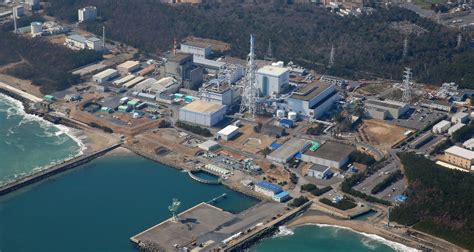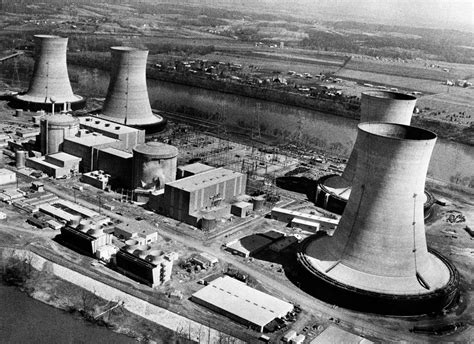
TOKAIMURA nuclear reprocessing facilities, Tokaimura, near Tokyo, Japan
But nuclear regulatory officials and scientists said that though serious, the accident, at the Tokaimura plant northwest of Tokyo, was not a catastrophe on the scale of a large reactor accident.

The Tokaimura Incident
JNC's predecessor, Power Reactor and Nuclear Fuel Development Corp. (Donen) suspended operations of its nuclear fuel reprocessing plant in Tokaimura in March 1997, after a fire and explosion occurred. After installing stricter safety measures, Donen hoped to resume operations after approval from local governments.

A photo of a plastic wrapped Hisashi Ouchi being transferred after the
INTERNATIONAL ATOMIC ENERGY AGENCY, Report on the Preliminary Fact Finding Mission Following the Accident at the Nuclear Fuel Processing Facility in Tokaimura, Japan, Non-serial Publications , IAEA, Vienna (1999) Download to: EndNote BibTeX *use BibTeX for Zotero. Close. Get citation details.

‘Most Radioactive Man’ Kept Alive For 83 Days As He ‘Cried Blood’ And
This plant employs about 172 people and is one of 15 nuclear facilities in Tokaimura. The main function of this plant is to convert isotopically enriched uranium hexafluoride into uranium dioxide fuel. Accident Details. On September 30, 1999, an accident occurred at a uranium fuel conversion test facility of JCO Co.,Ltd. Tokai-mura, Japan.

Tokai nuclear plant operator files request to extend operation of aging
INTRODUCTION. 1.1. BACKGROUND TO THE IAEA SECRETARIAT TEAM MISSION. On 30 September 1999, at lo:35 local time (01:35 GMT), a criticality1 accident occurred in the conversion building (auxiliary plant) at the uranium conversion facility of JCO Company Limited in Tokaimura, Ibaraki Prefecture, Japan.

The Fall of Tokaimura Nuclear Power Alternative Energy
The Tōkai Nuclear Power Plant (東海原子力発電所, Tōkai genshi-ryoku hatsuden-sho, Tōkai NPP) was Japan's first commercial nuclear power plant. The first unit was built in the early 1960s to the British Magnox design, and generated power from 1966 until it was decommissioned in 1998. A second unit, built at the site in the 1970s, was the first in Japan to produce over 1000 MW of.

Nuclear power plant accidents listed, visualised and ranked since 1952
specializing in the nuclear fuel cycle and its regulation, emergency response and accident consequence assessment, and environmental monitoring and dosimetry, on a fact finding mission to Tokaimura from 13 to 17 October 1999. Based on the key technical information obtained during the mission, a

Chapter 36 Tokaimura Criticality A Book Nuclear Energy Peaceful
Tokaimura Criticality Accident. At approximately 10:35 a.m. on September 30th, 1999, workers at the JCO nuclear fuel processing plant poured a seventh batch of 18.8% enriched uranyl nitrate solution, along with Uranium-235, into a precipitation vessel. The goal of this process is to convert the isotopically enriched uranium hexafluoride into.

On This Day Japanese nuclear worker ‘most radioactive man in
The Catastrophic Nuclear Accident. The disaster unfolded on Sept. 30, 1999, at the Tokaimura nuclear power plant. In a rush to meet deadlines, Hisashi Ouchi and colleagues, untrained in the process, manually mixed uranium, causing a critical mass explosion. Evacuations ensued, but Ouchi's ordeal had just commenced.

Worst environmental disasters CBS News
Out-of-control chain reaction at nuclear fuel plant in Tokaimura releases high levels of radiation in air in worst accident in Japan's troubled history with nuclear power; 35 people are exposed.

Engineering Channel Tokaimura Nuclear Accident
In the nuclear accident at Tokaimura, a small fuel preparation plant operated by Japan Nuclear Fuel Conversion Co., some victims were exposed to extremely high radiation exposure, and the importance of radiation dose evaluation by chromosome analysis and treatment using regenerative medicine in emergency exposure medicine was recognised.

Nuclear Waste Management in Japan
Tokai Nuclear Plant, Japan's first nuclear power station. The Tokaimura nuclear accidents refer to two nuclear related incidents near the village of Tōkai, Ibaraki Prefecture, Japan.The first accident occurred on 11 March 1997, producing an explosion after an experimental batch of solidified nuclear waste caught fire at the Power Reactor and Nuclear Fuel Development Corporation (PNC.

The Fukushima Daiichi Nuclear Disaster Eight Years On Resources to
Tokaimura Criticality Accident 1999. (Updated October 2013) In 1999 three workers received high doses of radiation in a small Japanese plant preparing fuel for an experimental reactor. The accident was caused by bringing together too much uranium enriched to a relatively high level, causing a 'criticality' (a limited uncontrolled nuclear chain.

ニュース写真 Japan Atomic Power Company's Tokai Nuclear Power... 原子力
The nuclear accident began before noon on Sept. 30, 1999, at the nuclear power plant in Tokaimura, Japan. With an obscene lack of safety measures and an abundance of fatal shortcuts, yet determined to meet a deadline, the Japan Nuclear Fuel Conversion Co. (JCO) told Hisashi Ouchi and two other workers to mix a new batch of fuel..

A Brief History of The Tokaimura Criticality Incident (Short
Tokai-mura, a small town 120 km northeast of Tokyo, is often referred to as the heart of Japan's nuclear industry. The Japanese Atomic Energy Research Institute was established here in 1956, followed by nuclear fuel factories, reprocessing plants and Japan's first nuclear power plant in the 1960s. Today, Tokai-mura is dotted with 15 nuclear.

explosion nuclear power plant 3d model
The Tokaimura plant lies some 150 kilometres northeast of Tokyo. The accident happened in a building, run by a company called JCO, used for one step in the process of making reactor fuel rods.
- Decorar Jarrones De Cristal Con Arena
- Proyector Led O Lampara Convencional 201920
- Oscar S Cortina El Enigma Del Mediterraneo на русском языке
- Modelo 340 Quien Esta Obligado
- Dedicatoria Para Un Entrenador De Futbol
- Master Para Poder Dar Clase En Secundaria
- Como Limpiar Vaso De Expansion
- Clinica Rehabilitacion San Pedro Gijon
- Herramienta Para Hacer Rosca A Tubo Galvanizado
- Lugar Donde Se Compran Las Entradas De Cine